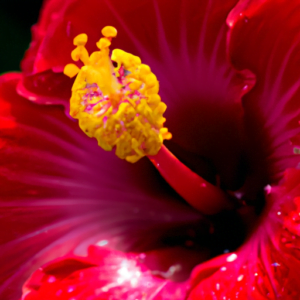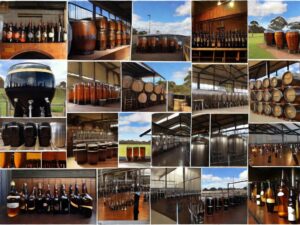Imagine yourself savoring the mouthwatering flavors of the ocean in every bite. From juicy Nova Scotia lobster to creamy Maine clam chowder, this article takes you on a delectable journey to explore the seafood specialties of the region. Get ready to tantalize your taste buds and discover the irresistible delights that await you in these coastal culinary havens.
Table of Contents
ToggleIntroduction to Popular Seafood Dishes
When it comes to seafood, the regions of North America offer a tantalizing array of delectable treats from the ocean. From the sweet and succulent Nova Scotia lobster to the hearty and comforting Maine clam chowder, there is something for everyone to enjoy. So, get ready to embark on a culinary adventure as we explore the seafood specialties of the region.
Nova Scotia Lobster
Overview
Nova Scotia lobster is renowned for its sweet and tender meat, making it a favorite seafood delicacy for many. Lobster fishing is an important industry in Nova Scotia, with its cold waters providing the perfect habitat for these delectable crustaceans.
Preparation and Cooking Techniques
To prepare Nova Scotia lobster, it is important to start with a live lobster for the freshest flavors. Carefully remove the rubber bands from the claws and rinse the lobster with cold water. Then, it can be boiled, steamed, or grilled to perfection. Boiling is a popular method, with the lobster being cooked in seasoned water for around 10-12 minutes per pound.
Popular Lobster Dishes
Nova Scotia lobster can be enjoyed in a variety of dishes, from simple lobster rolls to decadent lobster bisque. Lobster rolls are a classic favorite, with the lobster meat mixed with mayo, celery, and seasonings, then served in a buttered and toasted bun. For a more indulgent experience, lobster bisque showcases the rich and creamy flavors of the lobster combined with aromatic herbs and spices.
Maine’s Clam Chowder
Overview
Maine’s clam chowder is a comforting and hearty soup that has become a beloved classic across the region. It is known for its creamy base, tender clams, and flavorful ingredients.
Traditional Ingredients
Maine’s clam chowder typically includes ingredients such as clams, potatoes, onions, salt pork or bacon, milk or cream, and seasonings like thyme and bay leaves. These ingredients come together to create a harmonious balance of flavors that is both comforting and satisfying.
Preparation and Cooking Techniques
To prepare Maine clam chowder, start by scrubbing and rinsing the clams under cold water to remove any sand or grit. Then, they can be steamed until the shells open. Strain the clam juice and set aside, removing the meat from the shells. In a large pot, sauté the salt pork or bacon until crisp, then add the onions and cook until tender. Add the potatoes, clam juice, and seasonings, and simmer until the potatoes are tender. Finally, add the clams and milk or cream, and heat through without boiling.
Serving Suggestions
Maine clam chowder is best served hot with a sprinkle of fresh parsley to garnish. It pairs well with crusty bread or oyster crackers for a satisfying meal. Enjoy it on a cool evening for the ultimate comfort food experience.
New England Seafood Boil
Overview
A New England seafood boil is a communal feast that brings people together to enjoy an abundance of fresh seafood. It is a vibrant and flavorful dish that celebrates the bounty of the ocean.
Variety of Seafood
A New England seafood boil typically includes a combination of lobster, shrimp, clams, mussels, corn on the cob, and potatoes. This medley of ingredients creates a colorful and appetizing spread that is sure to impress.
Seasonings and Spices
The key to a delicious New England seafood boil lies in the flavorful seasonings and spices. Old Bay seasoning, a blend of herbs and spices, is often used to infuse the seafood with a zesty and aromatic taste. Other common seasonings include garlic, lemon, and red pepper flakes for an added kick.
Preparation and Cooking Techniques
To prepare a New England seafood boil, start by bringing a large pot of heavily salted water to a boil. Add the potatoes and corn on the cob, allowing them to cook for about 10 minutes. Then, layer the seafood on top, starting with the lobster, followed by the shrimp, clams, and mussels. Cover the pot and let the seafood steam until cooked through, usually around 10-15 minutes. Once ready, carefully transfer the seafood and vegetables to a large platter, and serve with melted butter and lemon wedges.
Accompaniments
A New England seafood boil is usually served with melted butter for dipping, lemon wedges for added brightness, and hot sauce for those who like an extra kick. It is best enjoyed outdoors with friends and family, creating a festive and memorable dining experience.
Maryland Crab Cakes
Overview
Maryland is famous for its delectable crab cakes, made with the region’s abundant blue crabs. These delicious cakes are packed with fresh crab meat and seasoned to perfection.
Crab Selection and Preparation
For the best Maryland crab cakes, it is important to start with high-quality crab meat. The most prized meat comes from the blue crab, known for its sweet and delicate flavor. After carefully picking through the crab meat to remove any shells, it is ready to be transformed into mouthwatering crab cakes.
Binding Ingredients
To hold the crab cakes together, a combination of breadcrumbs, mayo, mustard, and eggs is used. These ingredients not only provide a delicious base but also help bind the crab cakes so they hold their shape during cooking.
Cooking and Serving Suggestions
To cook Maryland crab cakes, heat a skillet with oil or butter over medium heat. Gently place the crab cakes in the skillet and cook until golden brown on both sides, usually around 3-4 minutes per side. Serve them hot with a side of tartar sauce or a squeeze of fresh lemon juice. Add a green salad or some crispy french fries for a complete and satisfying meal.
Louisiana Crawfish Etouffee
Overview
Louisiana crawfish etouffee is a rich and flavorful dish that showcases the unique taste of crawfish. This classic Cajun dish is a true representation of Louisiana’s vibrant culinary heritage.
Crawfish Selection and Preparation
To make crawfish etouffee, it is important to start with fresh crawfish. Live crawfish are usually boiled until they turn bright red, and then the meat is carefully extracted from the shells. The meat can be used immediately or refrigerated until ready to use.
Roux and Seasonings
The base of Louisiana crawfish etouffee is a dark roux, made by cooking flour and oil together until it reaches a deep brown color. This roux adds depth and richness to the dish. Seasonings such as onions, bell peppers, celery, garlic, and spices like paprika, cayenne pepper, and thyme are also added to enhance the flavors.
Preparation and Cooking Techniques
To prepare crawfish etouffee, start by sautéing the onions, bell peppers, and celery in the roux until softened. Then, add the garlic and seasonings, and cook for a few more minutes to allow the flavors to meld. Add the crawfish and simmer until they are heated through. The dish is typically served over a bed of fluffy white rice to soak up the flavorful sauce.
Serving Suggestions
Louisiana crawfish etouffee is traditionally served with a side of hot sauce for those who crave an extra kick. Garnish with fresh green onions and serve with warm French bread for a truly authentic experience. Savor the flavors of Louisiana with each spoonful of this delicious dish.
Pacific Northwest Salmon
Overview
The Pacific Northwest is renowned for its abundance of fresh and flavorful salmon. This region offers a variety of salmon species, each with its own unique characteristics and taste.
Types of Salmon
The Pacific Northwest is home to several types of salmon, including Chinook (also known as king), coho, sockeye, and pink salmon. Each type has its own distinct flavor profile, ranging from rich and fatty to mild and delicate.
Catching and Harvesting Methods
Salmon in the Pacific Northwest are often caught through a combination of commercial fishing and sustainable practices. The region is committed to protecting its salmon populations and ensuring their long-term viability.
Preparation and Cooking Techniques
Salmon can be prepared in various ways, depending on personal preference. Grilling, baking, poaching, and pan-searing are popular cooking methods that highlight the natural flavors and textures of the fish. Seasonings such as lemon, dill, garlic, and soy sauce can be used to enhance the taste.
Serving Ideas
Pacific Northwest salmon can be enjoyed on its own, simply seasoned and grilled to perfection. It can also be served with a creamy dill sauce, alongside a side of roasted vegetables or a fresh salad. The possibilities are endless when it comes to this versatile and delicious fish.
California Dungeness Crab
Overview
California Dungeness crab is a true delicacy, known for its sweet and succulent meat. With its striking appearance and remarkable taste, it has become a popular seafood choice along the California coast.
Crab Selection and Preparation
When choosing Dungeness crab, look for live crabs that are heavy and active. To prepare the crab, start by rinsing it under cold water to remove any dirt or debris. Carefully crack open the shell and remove the meat, keeping it as intact as possible.
Cooking Methods
California Dungeness crab can be steamed, boiled, grilled, or even roasted. Steaming is a popular method, as it allows the crab to retain its natural sweetness and delicate flavors. Boiling is another common technique, with the crab being cooked in seasoned water until it turns a vibrant orange-red.
Popular Crab Dishes
California Dungeness crab is often enjoyed simply on its own, with a little melted butter for dipping. It can also be used in various dishes such as crab cakes, crab salads, or even as a topping for pasta or risotto. The versatility of this crab makes it a favorite ingredient in many California-inspired recipes.
Texas Gulf Shrimp
Overview
Texas Gulf shrimp is prized for its sweet and firm meat, making it a popular choice in the culinary world. Whether grilled, sautéed, or fried, these shrimp are sure to satisfy any seafood lover’s palate.
Shrimp Selection and Preparation
When choosing Texas Gulf shrimp, look for shrimp that are firm and translucent, with a mild ocean scent. To prepare the shrimp, remove the shells and devein them if necessary. Rinse the shrimp under cold water to remove any remaining grit or impurities.
Cooking Methods
Texas Gulf shrimp can be cooked using various methods, depending on the desired outcome. Grilling the shrimp brings out their natural sweetness and imparts a smoky flavor. Sautéing or stir-frying allows for quick and easy preparation, while frying gives the shrimp a crispy and golden exterior.
Serving Suggestions
Texas Gulf shrimp can be enjoyed on their own with a squeeze of fresh lemon juice or paired with a homemade cocktail sauce for dipping. They can also be used in tacos, salads, or pasta dishes for a burst of flavor. Get creative with these succulent shrimp and let your taste buds be your guide.
Florida Key Lime Pie
Overview
No seafood feast is complete without a sweet and tangy slice of Florida Key lime pie. This iconic dessert is a perfect ending to a seafood-filled meal, with its creamy filling and buttery graham cracker crust.
Key Lime Pie Filling
Authentic Florida Key lime pie is made with Key lime juice, condensed milk, and egg yolks. The tartness of the Key lime juice is beautifully balanced by the creamy sweetness of the condensed milk, resulting in a luscious and indulgent filling.
Graham Cracker Crust
The crust of a Key lime pie is typically made from crushed graham crackers, mixed with butter and sugar. This gives the pie a crunchy and buttery base that complements the smooth filling.
Baking and Serving
To make a Key lime pie, combine the Key lime juice, condensed milk, and egg yolks, then pour the mixture into the prepared graham cracker crust. Bake the pie until set, usually around 15-20 minutes. Once cooled, refrigerate the pie for a couple of hours to allow it to firm up. Serve chilled, topped with whipped cream and a sprinkle of lime zest for a refreshing finish to your seafood feast.
Conclusion
From the sweet and succulent Nova Scotia lobster to the tangy and refreshing Florida Key lime pie, the seafood specialties of the region never cease to delight the taste buds. Each dish offers a unique and memorable culinary experience, showcasing the bountiful flavors of the ocean. So, whether you find yourself in the East Coast indulging in a Maryland crab cake or on the West Coast savoring a Pacific Northwest salmon, be sure to relish in the delicious delights that the sea has to offer.




